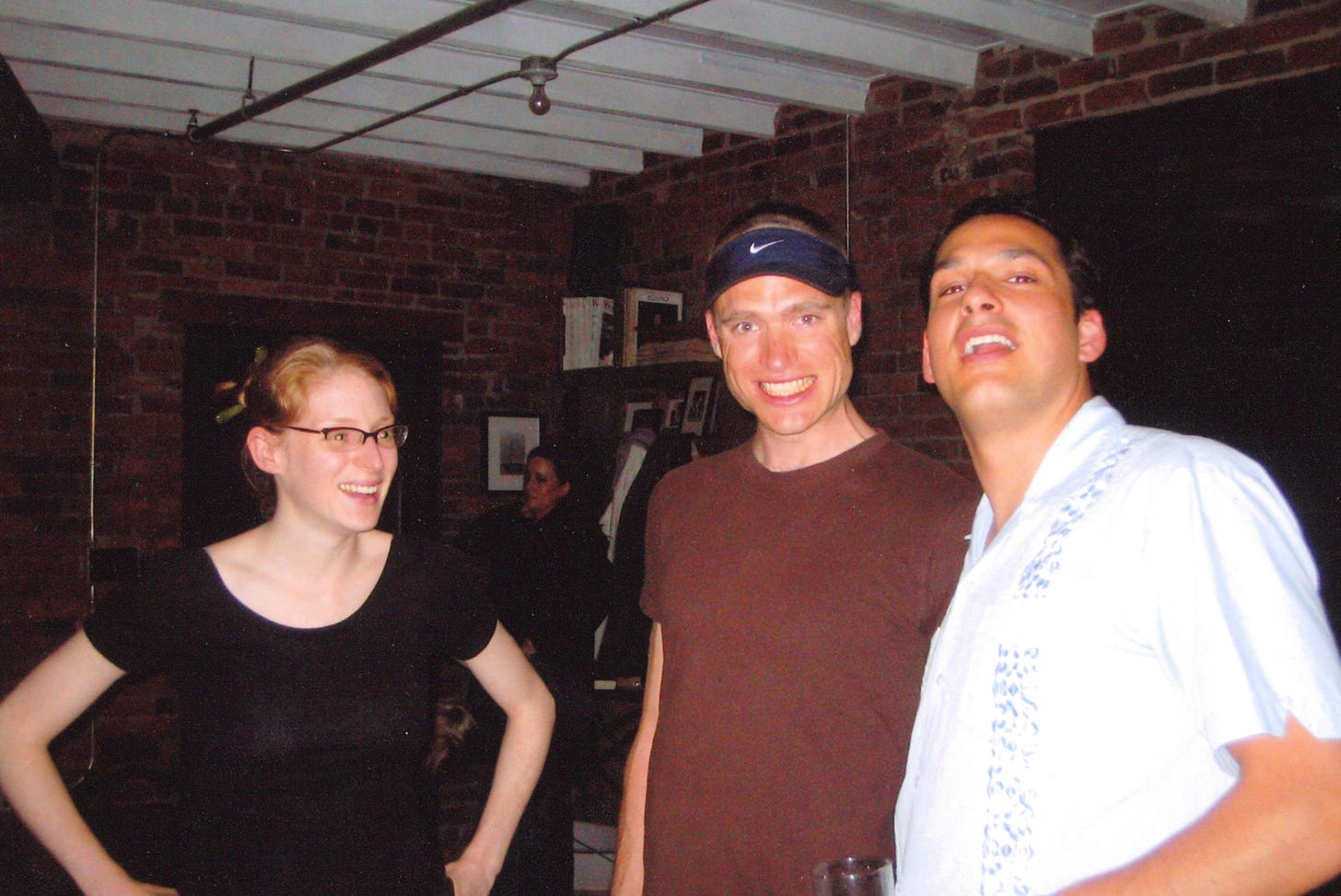We Should Really Hang Out More Often
The diminished value or hanging out in person, and the corresponding loss of spaces to hang in, is a very big deal.
The Atlantic published an article last week entitled, “Why Americans Stopped Hanging Out.” There may seem to be topics more important than the decline in hanging out —Israel, Ukraine, immigration, homelessness, global warming, etc. —but to me, it’s about the most important topic there is (the decline of the family unit being number one). In the absence of regular physical human congress, people regularly congress with backlit digital screens and the versions of reality those screens portray. In this digitocracy, what’s important is determined by the screen, not what’s happening around us. News is what the screen tells us news is, not what we perceive as important or are told by members of our communities. Product recommendations come from corporation-backed influencers on social media, not from the voices of caring peers and neighbors. Romantic partnerships are determined by manipulated images and algorithms, not by what we see and not through our social connections. The net result of the shift from the physical to virtual is a population that believes what the screen says is true, no matter how illogical or contrary that truth is to their senses and intellect. The screen tells us Israel and Ukraine are more important than what’s going on in our communities or even in our homes. It tells us we can’t do anything to affect global warming without institutional support. It tells us that two buffoon, octogenarians are the best the US can do for leadership. A world that doesn’t hang out is a real and big problem.
The piece’s author, Derek Thompson, does a solid job of explaining the myriad reasons why the loss of hanging out is such a big deal, connecting it to the rise in loneliness and mental illness. Thompson writes:
But for Americans in the 2020s, solitude, anxiety, and dissatisfaction seem to be rising in lockstep. Surveys show that Americans, and especially young Americans, have never been more anxious about their own lives or more depressed about the future of the country. Teenage depression and hopelessness are setting new annual records every year. The share of young people who say they have a close friend has plummeted. Americans have been so depressed about the state of the nation for so many consecutive years that by 2023, NBC pollsters said, “We have never before seen this level of sustained pessimism in the 30-year-plus history of the poll.”
He also talks about how dogs are replacing humans as go-to companions, a subject that will probably get its own commentary (people today would rather enslave themselves to their dogs than deal with messy human emotions).
The piece also indirectly explains real estate’s role in discouraging hanging out. One of my favorite lines from the piece is, “Someone once told me that the best definition of community is ‘where people keep showing up.’” Thompson writes about how the loss of churches, social clubs, and other community-oriented spaces —places where people used to keep showing up —has left few physical spaces to hang out. These community spots have effectively been replaced by workplaces, restaurants, and other spaces that force people to make or spend their money, not make connections or spend their time.
A few weeks ago, The New York Times published a pictorial piece entitled, “Williamsburg. What Happened?” For non-New Yorkers, Williamsburg is a neighborhood that was once a bastion for artists and other societally-divergent types in search of cheap real estate, often in the form of former industrial lofts. When people tend to think of a hip Brooklyn, they’re probably thinking about Williamsburg. Today, Williamsburg is a bastion for flush Euro-trash-types, trustafarians, and luxury retail shops —an expensive, branded imitation of authentic creativity.
I moved to Williamsburg in late 2001, and though I missed some of the area’s grittier, uber-hip days in the 80s and 90s, 2001 Williamsburg was still a cool place to be —where a loft party, rooftop party, or cool creative project was always in spitting distance. The cost of living was sufficiently low that people could hang out and pursue their passions, not just work to survive. Worth noting is that 2001 digital screens weren’t that interesting. It was an exciting place to live. It was a scene , one largely made possible by cheap real estate. As the luxury towers moved in around 2008, as the cost of living surpassed what a gig-working artist could reasonably afford, the authentic scene was replaced by an imitation one.
One of the more exciting prospects of a societal collapse is a return to authentic, physical community. When supply chains break down, markets collapse, and all climatic and social hell breaks loose, all we’ll have is each other and a lot of empty commercial real estate. I pray this loss of all that’s new will presage a return to that which once was —to family, community, art, and the simple act of hanging out.
Song of the day:





